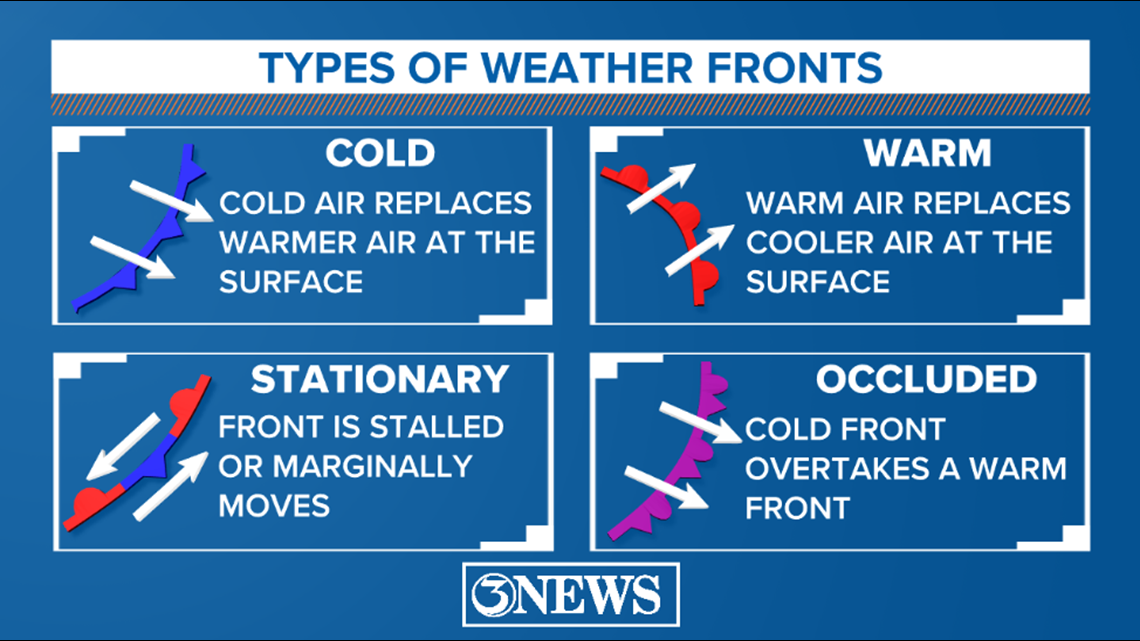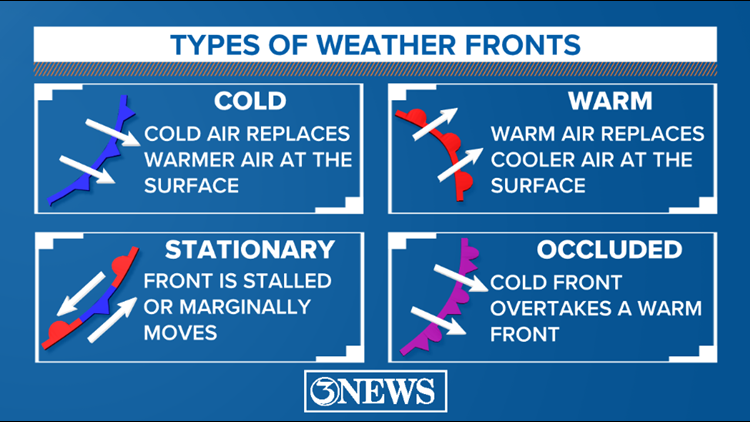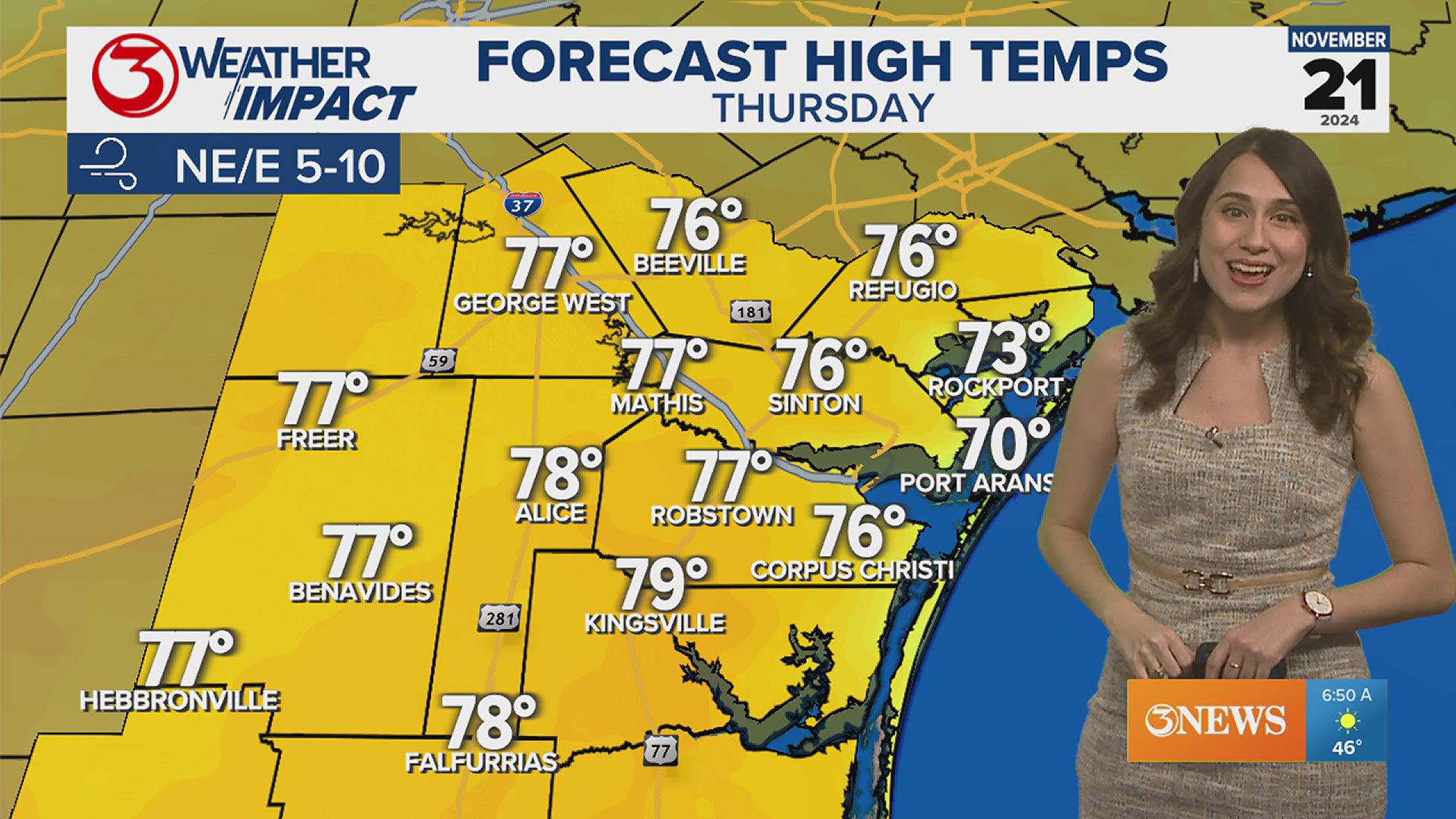CORPUS CHRISTI, Texas — October is the time of year that cold fronts start to roll through South Texas regularly. Often, these fronts are weak and tend to be described as 'cool' fronts, BUT - did you know that 'cool' front isn't a recognized type of front? Google 'cool front' and see what you find.... There are four basic types: cold, warm, stationary, and occluded. A front is defined by a transition zone between two air masses.
I choose to always call a transition from warm air to cooler air a 'cold' front, regardless of temperature. For example, a front moving through that drops temperatures from the middle 90s to the middle 80s would be a cold front by definition because you are replacing warmer air with comparably cooler air. I know folks would, and often do rebuttal by saying, 'well 80s are still warm, how is this a cold front?!', and that's true, but it's still a cold front by definition. The same would be true if temperatures went from the mid 60s down to the mid 50s with the passage of a front - cold front. Fronts aren't defined by how we perceive the air associated with them, they're defined by how the air changes as they pass. That's how I define them in forecasting. An extreme example would be going from 115° down to 90° - still a cold front even though it's still hot. Some forecasters will refer to weaker cold fronts as cool fronts, and that's ok, I just choose to stick with the 'textbook' definition.
Today (Oct. 21), a cold front will work through the Coastal Bend; in Corpus Christi before noon. This front will not be a strong one, but temperatures will be in the mid to low 80s this afternoon, compared to the low 90s we had yesterday. So, no, it will not be cold, but it's still a cold front by definition. A stronger cold front is in the forecast Thursday night, into Friday. This one may keep high temperatures in the 60s, Friday if the current forecast holds.

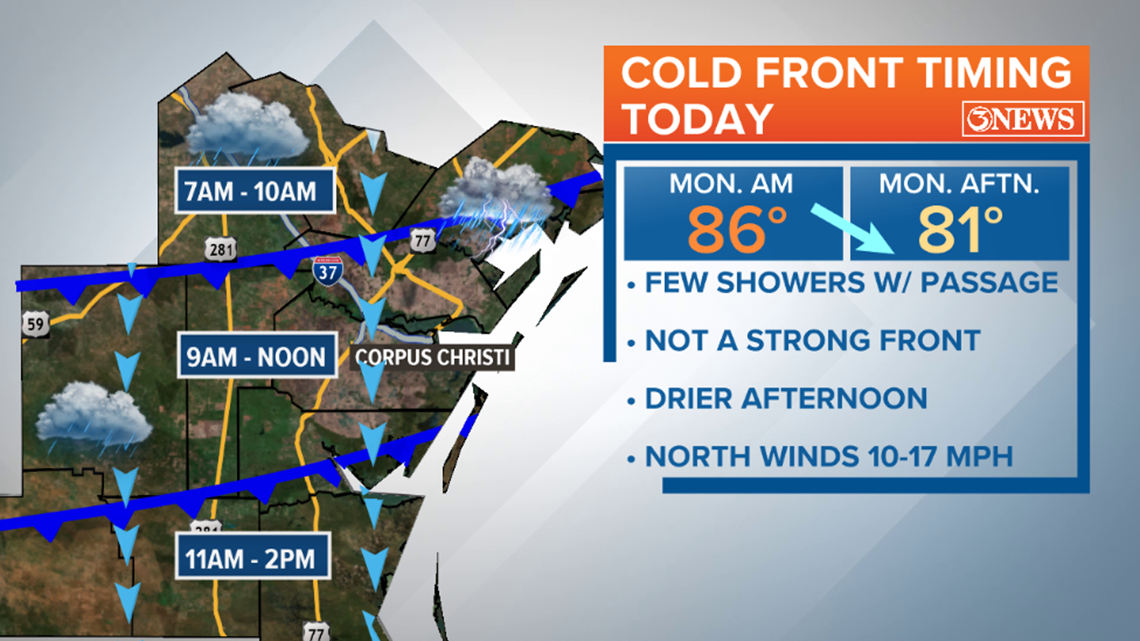

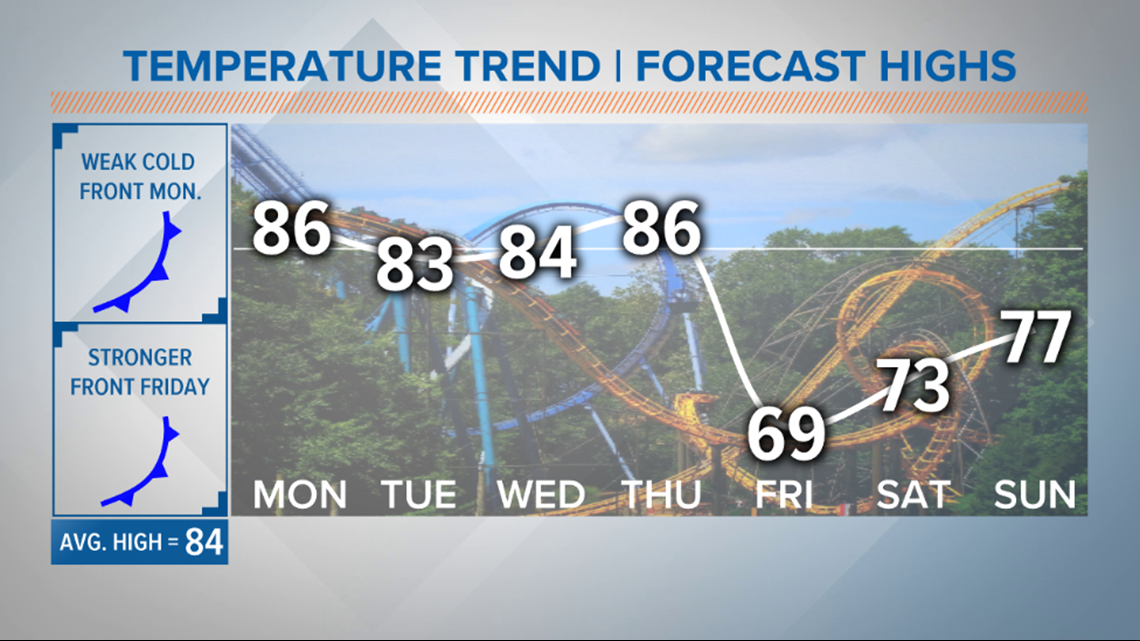
The other three types of weather fronts having to do with temperature are Warm, Stationary, and Occluded. A warm front is when warmer air replaces colder air. These are slower moving than the cold counterparts and the temperature swings are not as drastic. Stationary fronts are fronts that are stalled, or not moving. We often see this happen in the Gulf of Mexico when cold fronts that pass through the Coastal Bend stall to our south. Occluded fronts are not common in South Texas - in fact I don't think I've seen it happen in my 7 years here. An occluded front happens when a cold front over-takes a warm front. This happens closer to the center of a low pressure system. As air circulates counter-clockwise around a low pressure center, the faster cold front can overtake a warm front. This is more common in the Great Lakes and Northeast.

